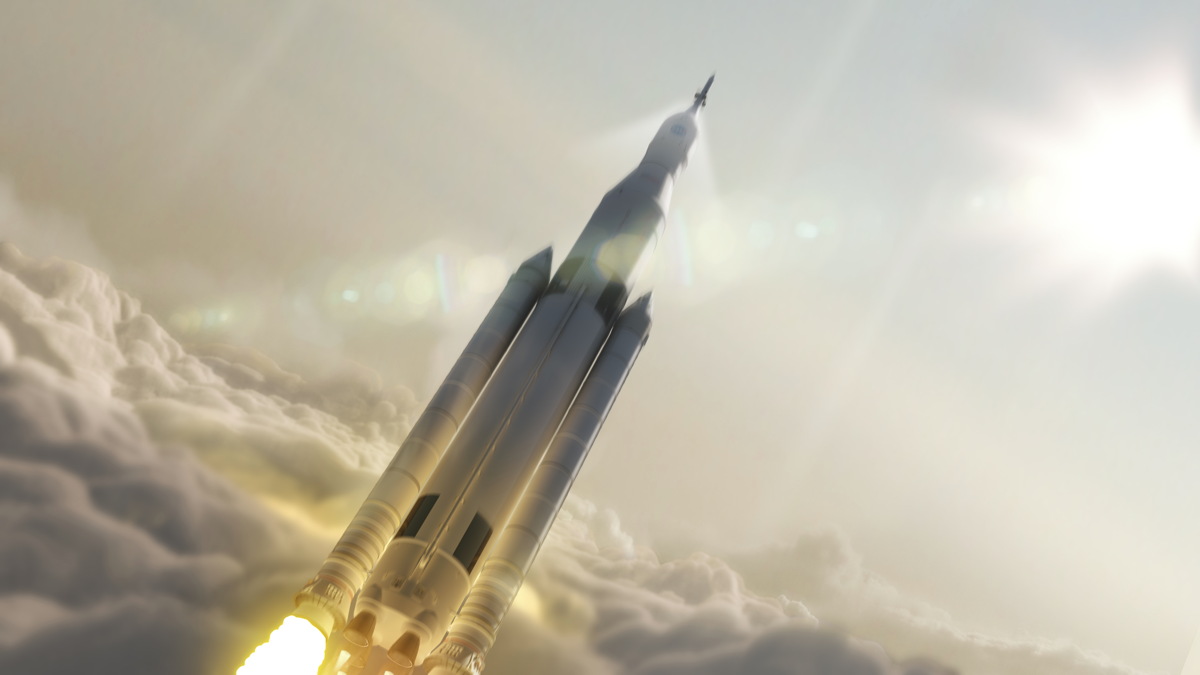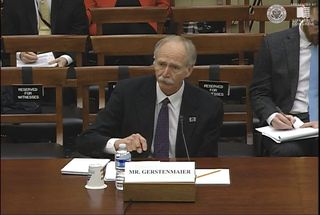NASA's New Space Launch System Mega Rocket Won't Fly Until 2018

NASA's new mega rocket will likely not make its first test launch until at least mid-2018, a top agency official told a U.S. lawmakers today (Dec.10).
The space agency's first test flight of the Space Launch System (SLS) was originally targeted for December 2017, however, that test will likely be delayed until at least mid-2018, according to Bill Gerstenmaier, NASA's associate administrator for human exploration and operations. Unexpected delays have pushed back the rocket's first launch, but Gerstenmaier is still confident that SLS will make its first flight before the end of 2018.
"We were holding December of 2017; I would say that we have now moved off of that date," Gerstenmaier told members of the House of Representatives Subcommittee on Space during a hearing today. "We will be somewhere in the 2018 timeframe now with our current planning, and that's just based on the reality of problems that have come along in the program and some uncertainty in funding." [See images of NASA's SLS megarocket]
The SLS test launch date is also dependent upon another NASA project in development. The space agency's Orion space capsule — designed to carry four astronauts to deep-space destinations like Mars eventually — will be placed atop the SLS for the uncrewed 2018 test flight, called Exploration Mission-1.
Orion will probably not be ready for the unmanned 2017 launch, either, Gerstenmaier said, but SLS will still likely be ready for launch before the space capsule whenever that may be. However, that isn't necessarily a bad thing.

"I think it's perfectly fine to complete one of these programs [Orion or SLS) ahead of one of the others," Gerstenmaier said. "They don't need to all synch up at exactly the same time … When you take a vehicle down to launch at the Kennedy Space Center, typically, the rocket is ready to go well before the payload is, and the payload comes later. It's actually to our advantage to have some difference in schedules between those."
SLS and Orion are designed to take humans deeper into space than ever before. Orion is built to be part of future missions that could bring astronauts to an asteroid and Mars for the first time.
Get the Space.com Newsletter
Breaking space news, the latest updates on rocket launches, skywatching events and more!
Orion launched to space atop a United Launch Alliance Delta IV Heavy rocket for its first test flight on Dec. 5. The successful mission helped NASA officials test key systems (like the capsule's parachutes and heat shield) before humans ever step foot onboard.
The SLS program is getting ready to start manufacturing pieces of the rocket necessary for flight, Gerstenmaier said.
NASA has a couple of other test missions planned for Orion and SLS in the future. After the first test flight in 2018, Orion and SLS are expected to fly a crewed mission for the first time in 2021. The change in the launch date for Exploration Mission-1 does not necessarily mean that any of the future missions will slip, Gerstenmaier said.
"We're not just building a single system that sprints to a destination," Gerstenmaier added. "We're building an infrastructure that allows us to have sustained presence beyond low-Earth orbit."
Follow Miriam Kramer @mirikramer. Follow us @Spacedotcom, Facebook and Google+. Original article on Space.com.
Join our Space Forums to keep talking space on the latest missions, night sky and more! And if you have a news tip, correction or comment, let us know at: community@space.com.

Miriam Kramer joined Space.com as a Staff Writer in December 2012. Since then, she has floated in weightlessness on a zero-gravity flight, felt the pull of 4-Gs in a trainer aircraft and watched rockets soar into space from Florida and Virginia. She also served as Space.com's lead space entertainment reporter, and enjoys all aspects of space news, astronomy and commercial spaceflight. Miriam has also presented space stories during live interviews with Fox News and other TV and radio outlets. She originally hails from Knoxville, Tennessee where she and her family would take trips to dark spots on the outskirts of town to watch meteor showers every year. She loves to travel and one day hopes to see the northern lights in person. Miriam is currently a space reporter with Axios, writing the Axios Space newsletter. You can follow Miriam on Twitter.









